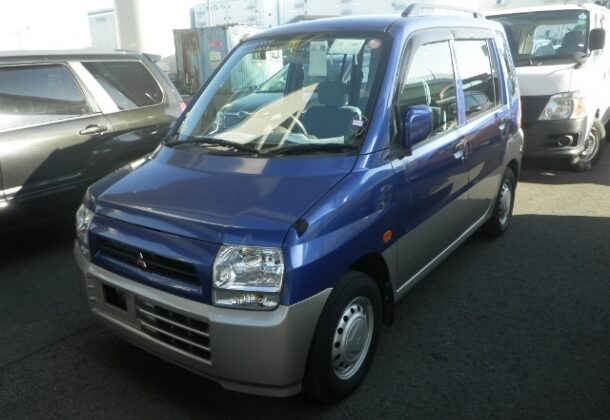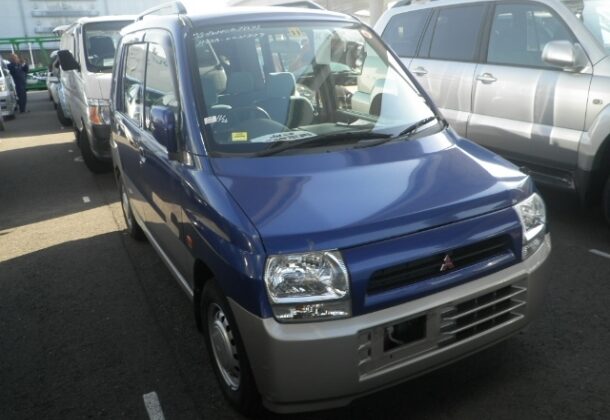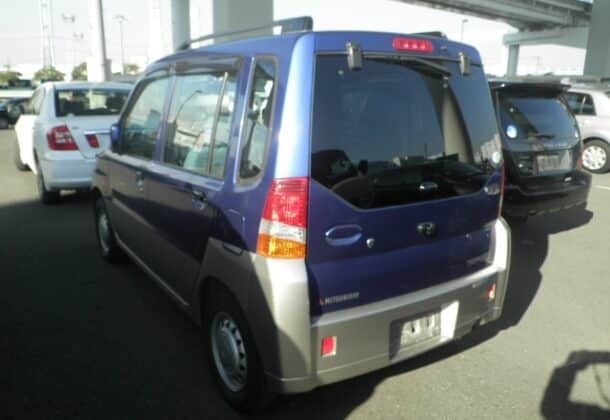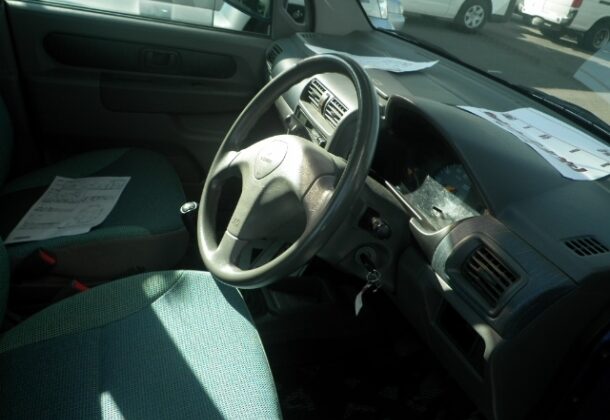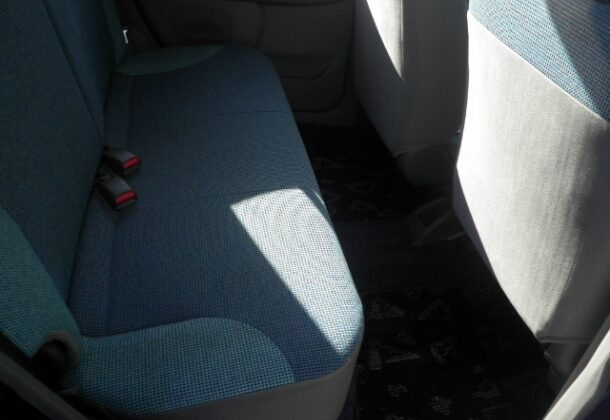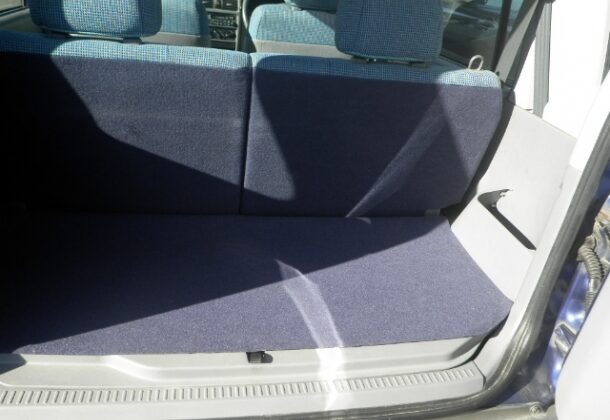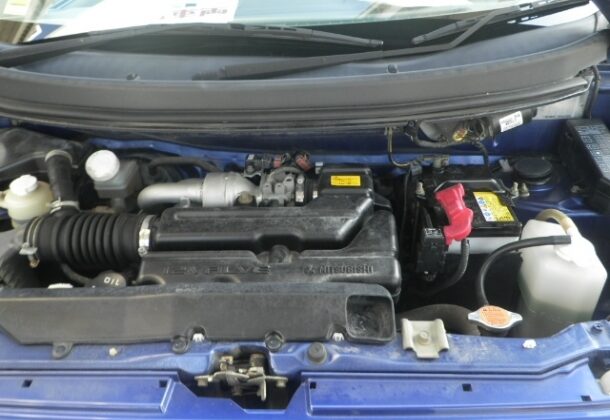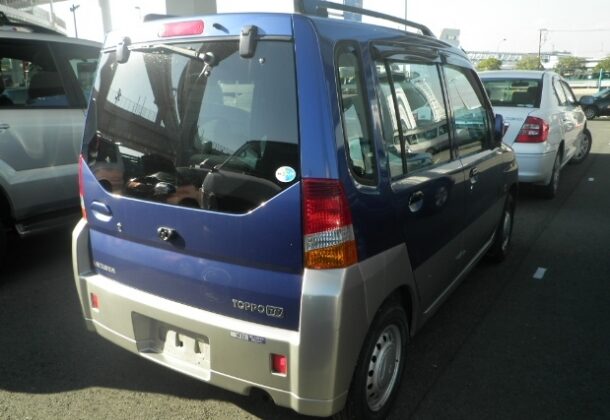Mitsubishi Toppo BJ 1998/3
Sold and Exported
A Small Car That Carries a Big Load: The Mitsubishi Toppo BJ
When I was looking for a 5-door hatchback type Kei car there was a used Mitsubishi Toppo for sale at one of the dealers down on the main road, Route 246, in Gotemba, where I was living at the time. The car had recently come to the dealer and still had shaken (MOT) and road tax on him and so the dealer let me have a test drive in the little Toppo. The first thing I noted was that, although the car is small on the outside (for those who are interested, the exact dimensions are, length: 3,395mm, width: 1,475mm, height: 1,695mm), it was certainly big on the inside, surprisingly so. (1,715 x 1,220 x 1,425 if you’re wondering).
Although I’m partial to the pre November, 1998 Japanese Kei cars, especially the Kei sports cars (have a look here on our Japan Car Direct Blog for our take on some of the best pre-1998 Kei sports iron available for self import from Japan, wonderful cars!).
I have to admit that since November, 1998, when the Japanese Kei car regulations changed (longer by 100mm and wider by 80mm), there have been some significant improvements on the practical side, and the late 1998 Mitsubishi Toppo BJ that were are looking at now

is a perfect example of the changes. (And just look at the low mileage on this clean used Kei car….Total Score!)
Most of the earlier Kei hatchbacks have good load capacity, or, at least, good enough. Rear seat leg room was O.K., but not generous. Your typical Suzuki Alto or Subaru Vivio are examples of the kinds of cars I’m talking about. (My 1993 Mitsubishi Minica was an exception, however, and had excellent rear seat leg room.)

But when you look at cars like the Toppo BJ, or its sister car, the Mitsubishi EK-Wagon, and when you look at cars like the post November, 1998 Suzuki Wagon-R, and other 5-door hatchbacks in this class, you’ll note right away that the higher roof line gives a higher, and roomier feeling interior. Other body design changes give these vehicles bigger doors and lower floors so that getting in and out (“ingress” and “egress,” if you want to talk like a car body designer) is much easier. Quite simply, small cars like the Toppo BJ do not feel cramped. A photo of the interior of a Toppo BJ from the open rear door will give you some indication of this:

And with the rear seats down you’ll see the excellent load capacity on these types of “high hatch” Kei cars, as I like to call them.

The rear load space is so good that you can use a Toppo as a cheap-to-run welfare vehicle that allows you to carry a passenger who needs a wheelchair to get around. Brilliant!



Engines at this time are also improved with a bit better torque and low end grunt to compensate for the slightly increased weigh of the high hatch design.
Sure, the high hatch idea comes out before 1998 in cars like the Daihatsu Move:

But I have to note a drawback with those early high hatch Keis: They were narrow enough that they were a bit tippy. I drove the sporty version of the Move, the SR-XX, like the one above, and, while the car certainly did “move,” having lots of get up and go, typical of turbo-charged and super-charged Japanese Kei sports cars, he just did not have the fast cornering stability of an Alto Works or a Vivio RX-R. I felt uncomfortable in the fast corners during our test drive; but my wife, who also tested the car, liked it very much. (But she has no sense of stability or proportion in many things, so let’s not bother too much what she thinks…..and I’m thinking she’ll never see this review, anyway…..)
The fact that cars like our Toppo here are less tippy than Kei vans but, with the rear seats down, have very good load and luggage capacity, makes them a viable alternative to the Japanese Kei vans. (Have a look on our site here for more information on these very practical little work vehicles. And you can find spec comparison tables here.)
Now, the Kei van is based on the Kei truck, so they are more in the commercial vehicle category, and they ride like that, too. Although I had a Kei van for years, a Subaru Sambar Dias.

and I would not say that he was uncomfortable, not at all, but, yes, compared to a Toppo, he was tippy and you had to drive him accordingly. Obviously.
So if you are looking to do a direct self import on a used Japanese Kei hatchback that has good load space, comfortable seats, does not feel cramped, and is super economical, then I certainly can recommend the Toppo BJ and the EK-Wagon. But let me just say: If you want an automatic transmission Toppo, go for the 4-speed autobox (Toppo BJ M-Limited), not the 3-speed. I say this because I’ve had both as courtesy cars from my mechanic down in Fuji City. It’s a long, winding road up the mountain to where I live on Mount Fuji, and the gear ratios on the 3-speed auto were simply not as good as on the four-speed auto. All told though, the 5-speed manual is best, and gives the best gas mileage, too.
If you want to import a used Kei car from Japan, and there are many good models and many clean units at good prices that come up here, especially at the Japanese used car auctions, register here
and we’ll help you decide on the best make and model for your needs and we’ll help you get it back home. Japanese Kei cars are delightful and practical cars. I’ve been driving them and owning them for 20 years.
Import information note: Here at Japan Car Direct we export lots of clean, cheap used Kei vehicles from Japan, especially Kei trucks (see here) and Kei sports cars (here).
To see the used car import rules for our major country import destinations, just click on the country name below:


